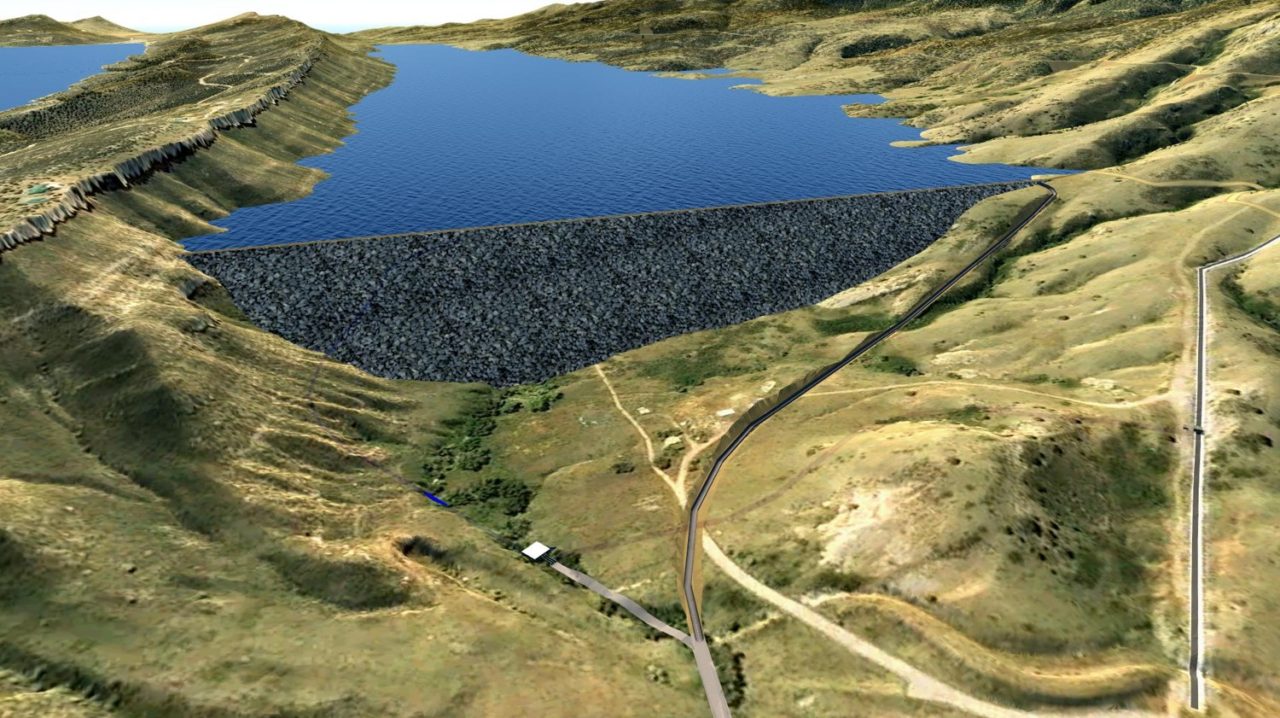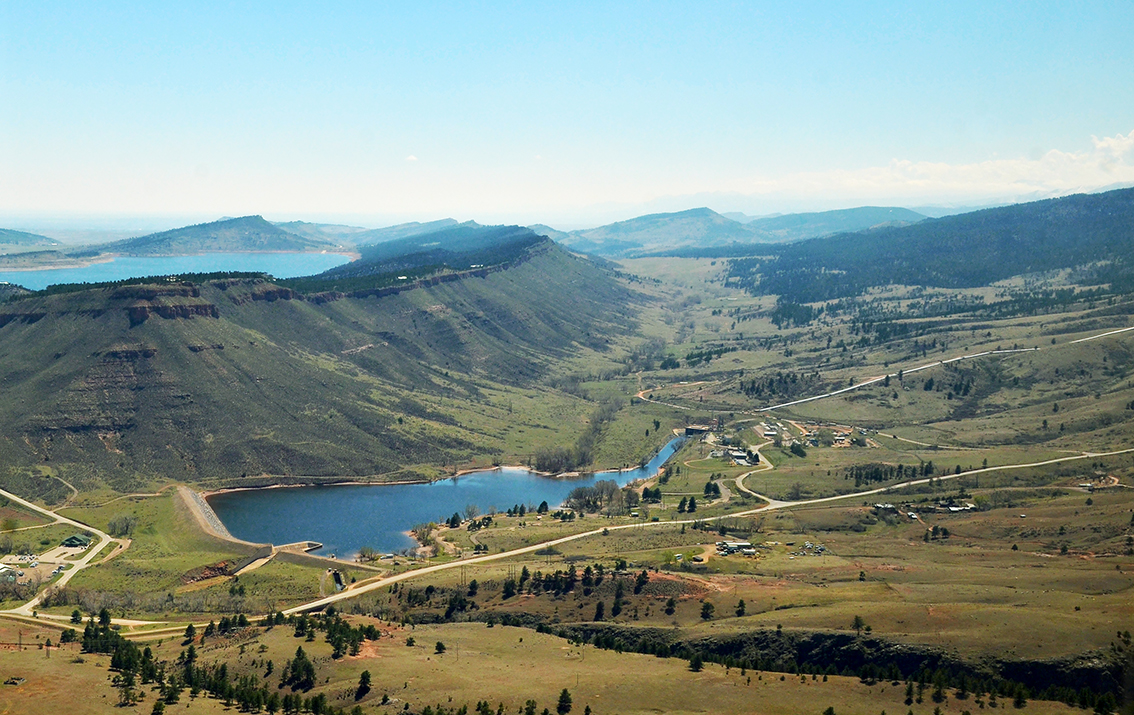By Mary Beth Skylis
This year, the Windy Gap Firming Project is kicking off construction of the 740-acre Chimney Hollow Reservoir. Located in southern Larimer County, it’s expected to be slightly smaller than nearby Carter Lake. The project’s aim is to have a fully functional reservoir by 2024 in order to prevent some of the hardships associated with drought.
Along with drought mitigation, the recreational opportunities are expected to have a tremendous impact on Northern Colorado. NOCO Style recently had the chance to talk to Jeff Stahla, Northern Colorado Water Conservancy District’s Public Information Officer, about some of the long-term implications of the project.
As early as the 1970s, cities along the Front Range recognized that needed water storage could prove vital to the health of local communities. Discussion of the reservoir gained momentum in response to 2002’s drought. Recognizing that the severity and length of water shortages is growing, several Northern Colorado communities began exploring ways to store water.
“When they looked at permits and how the operations to get water to each city would work, they decided a big reservoir would be best,” says Stahla. “Since 2002, the population growth has continued on the north Front Range. So, we’re looking at this not just to meet the needs of today but, really, for future generations.”
Broomfield, Platte River Power Authority, Loveland, Greeley, Longmont, Erie, Little Thompson Water District, Superior, Louisville, Fort Lupton, Lafayette and Central Weld County Water District are teaming up for the construction of the Reservoir. And Stahla explains that the amount of money that each community will contribute directly relates to the proportion of the reservoir storage to which they’ll have access.
“Each of the participants is putting in an amount [of money] that corresponds to their share of the water. So, for instance, Broomfield has the largest share of the reservoir. They’ve got more than a quarter of it. So, they’re going to be paying the proportional amount of the cost. Every community that’s participating is putting in money,” says Stahla.
But the Chimney Hollow Reservoir will be unique in its construction as well. Although dams with asphalt core construction are relatively common in Europe, Chimney Hollow Reservoir will be one of two dams in the U.S. to be constructed in this way.
Stahla states: “Because this dam is right next to the boundary of the Rocky Mountains and the sedimentary rocks of the Eastern Plains, there isn’t enough of the watertight clay in the footprint of the dam to be quarried as the waterproof element at the core of the dam. Instead, a special type of asphalt (much less brittle than road asphalt) will provide that watertight ‘stopper.’ Another dam of that type is found in Arizona, and they are common in Europe, where less of that clay is available.”

The dam will be 355 feet tall, and will hold back 90,000 acre-feet of water, making it slightly smaller than Carter Lake. Stahla says that the original goal was to begin construction of the reservoir in May 2020. But it’s likely that construction will begin this fall.
When asked what the general response to the construction of the reservoir has been, Stahla says, “When I talk to community leaders up and down the Front Range, they recognize that we’ve been extremely fortunate in the past few years because we’ve had above-average water. But they know the next drought could come at any time. So, having storage is an insurance policy against that next drought. I wouldn’t call it excitement over this, but more like relief that we’re just about ready to get this thing started.”
Yet, any time a massive construction project is expected to begin, local environmentalists question the long-term impacts of change. Stahla alludes to some turbulence revolving around the construction project. “There are groups who did file a lawsuit against the project. And their lawsuit isn’t against us. It’s against the federal government for allowing the permit for this project. They feel that the government didn’t study the effects long enough or hard enough.” Some community members are concerned about the impact that constructing a reservoir will have on the local ecology.
Regarding the history of the area in which the reservoir will be constructed, Stahla says: “The area had been slated to become a retreat center for Hewlett-Packard and its Northern Colorado employees, but the company went another direction in the late 1990s and decided to sell it. Before HP owned it, the land was used for ranching.”

Images courtesy of Northern Colorado Water Conservancy District.
Although the project will aim to alleviate the long-term costs of future droughts, the construction process is no small endeavor. “The dam project itself is going to cost about $480 million. When you add all the other work that we’re doing on the west slope, it’s going to be closer to $600 to $650 million. That is still cheaper, by a lot, than if you wanted to go out and buy water rights in Northern Colorado,” says Stahla. But project officials hope that the reservoir will generate income down the line through its recreational opportunities.
Larimer County will manage the Chimney Hollow Open Space Public Recreation Area. The open space will include over 2,000 acres of forest. They plan to create recreational opportunities in conjunction with the reservoir, including fishing, hiking, horseback riding and non-motorized boating. The reservoir will only permit hand-launched boats to enter the reservoir. It will be the largest reservoir that’s dedicated to non-motorized boats in Colorado.
“I really think it’s going to be a jewel for the standup paddle board community because too many times, if you’re out on a reservoir, you’re battling the jet skiers and paddleboats and the waves they produce,” says Stahla. “So, this is really going to be focused for the non-motorized folks.”
Stahla remains hopeful that construction will end in 2024, making the reservoir fully operational thereafter. The flow of water, however, will determine when it’ll be available for public use.






